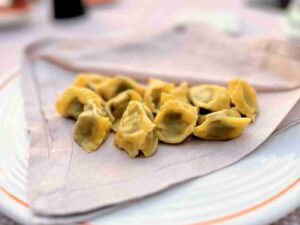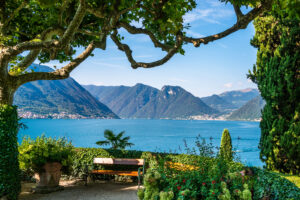Cheese Tasting with the Refiner in the Langhe Hills
Discover the Langhe Hills through the cheese refiner experience, a gem that reconnects to local flavors and traditions.
The Langhe Hills, located in southern Piedmont between the Tanaro River and the Apennine Mountains, are famous for their traditional cheese production. In addition to the usual dairy farms, there is the chance to meet one of the region’s few cheese refiners for an unforgettable and educational cheese tasting experience.
This is not your typical dairy farm tour; there are no petting animals or demonstrations of the cheese-making process. Instead, guests receive a brief introduction to the ancient art of cheese refining before being taken inside the cave, where most of the refiner’s daily work takes place.
Inside this cave, wheels of cheese sourced from various cheesemakers across Piedmont and beyond are stored. Guests will learn about the fascinating process through which the refiner enhances the cheese’s flavor and texture during its maturation.
The experience culminates in a guided cheese tasting, allowing participants to appreciate various textures and delightful aromas, which are paired with jams, honey, breadsticks, and wine.
Who is the Cheese Refiner?
In France, the term “affineur” refers to a professional who specializes in “refining,” which involves enhancing the quality of cheese made elsewhere through a process known as maturing. This is distinct from standard aging, which does not achieve the same level of quality.
The difference between maturation and aging largely comes down to time. For instance, Robiola di Roccaverano, a smooth goat-milk cheese produced in the province of Asti, requires a shorter maturation period. In contrast, Castelmagno, a cow-milk cheese renowned as the king of Piedmont cheeses, requires a much longer aging period, which can last for several years.
Being a cheese refiner necessitates a strong foundation in technical skills such as microbiology and chemistry. However, this profession also demands creativity, passion, and patience, as time plays a crucial role in the refining process.
Refining cheese is not a random endeavor; it is the result of a carefully planned project. To impart a specific character to the cheese, the product must be exposed to specific external conditions and chemical-physical factors.
Daily monitoring of various elements is essential, including time, temperature, humidity, microflora, additional ingredients applied to the cheese’s surface, and the presence or absence of oxygen, among other factors.

Discover Langhe, Home of Piedmont’s Food and Wine
Discover the Langhe Hills, a UNESCO World Heritage Site celebrated for its stunning vineyard-covered landscapes, renowned wines, truffles, and intimate culinary experiences, such as visiting the cave of a cheese refiner.
The cave of the cheese refiner is a sacred space. By controlling the humidity and temperature in the room where the cheeses are placed, the refiner creates ideal conditions for molds and microflora to thrive. This process initiates several reactions, one of which is known as proteolysis—the breakdown of proteins that enhances the texture, flavor, and aroma of the cheese.
Furthermore, depending on the creativity and curiosity of the cheese refiner, some types of cheese may be exposed to various ingredients that release their scents and flavors through a process called osmosis. Traditional products from the Langhe Hills are often used for this purpose, such as grape skins leftover from winemaking, local herbs, and flowers. Occasionally, imported spices are also included. The unique tastes of these elements can be easily detected during the cheese tasting, especially as the product melts in your mouth.
Discover Langhe’s Traditions with the Cheese Refiner Experience
The Langhe is more than a landscape; it’s a living treasure chest of tradition waiting to be unlocked. In these rolling hills, ancient gestures are not just memories but are still practiced with reverence. The knowledge of past generations—the secrets to cultivating and creating—is now being fused with the solid scientific expertise and modern technical skills of artisans. Take the cheese refiner, a perfect example of this fusion, which transforms entry-level cheese into masterpieces by honoring age-old methods while embracing innovation.
The role of oxygen in fermentation and aging cheese has long been recognized in shaping the final taste of cheese, whether it is present or absent.
Some cheeses can mature in containers, such as terracotta jars, often wrapped in hay or leaves. During fermentation, the presence of oxygen raises the temperature, causing the cheese to release some of its whey while simultaneously absorbing the aromas from the surrounding vegetables.
In contrast, other cheeses can be sealed in airtight containers where only anaerobic microorganisms can thrive. This lack of oxygen leads to a different maturation process. These sealed jars become saturated with humidity, and as the temperature increases, the cheese becomes softer, spicier, and more complex in flavor.

Responsibility of Refining Cheese
The craft of cheese refinement is ancient and can be described as both an art and a science. It is an art because creativity plays a crucial role in the process, and it is a science due to the solid educational foundation required for this profession.
One notable institution that prepares students for a career in this field is the University of Gastronomic Sciences of Pollenzo, a small town situated between Alba and Bra in southwest Piedmont.
Working with raw-milk pasture cheese involves handling live microorganisms, which means that both the cheese maker and the refiner must possess technical skills. Raw milk cheese is in a constant state of evolution, as bacteria enhance its flavor. If not managed properly, the final product can develop harmful cracks and bad bacteria.
One of the most fascinating aspects of cheese refinement is that experience allows one to predict how cheese will respond to various environmental conditions. This knowledge enables the development of distinctive characters in even the simplest cheese forms.

Discover Piedmont’s Hidden Artisans: the Cheese Refiner Experience
Discover Piedmont’s hidden artisans, like the cheese refiner, a professional master who calls their farmhouse home, where cheese wheels are stored.
Cheese refiners work diligently in their cellars, following a strict routine. One of their most common tasks involves rubbing the cheese wheels with brine, salt, or occasionally spirits, wine, or beer. This practice allows the salt or alcohol to gradually penetrate the cheese, enhancing its flavor and thickening the crust. It also helps eliminate unwanted molds and improves the preservation of the cheese.
Another important task in the refining cellar is regularly turning the cheese wheels. This process facilitates drying and allows the bacteria to work evenly across the cheese.
The Tour of the Refining Cellar
Experience the art of cheese refining firsthand on a food tour of Piedmont and discover the rich traditions behind fine cheese aging. An expert guide will walk you through each step of the refining process and explain the different techniques used to mature cheese.
For instance, you’ll find it fascinating to see the hammer used to detect cracks or air bubbles in larger cheese shapes. By tapping on the crust, the cheese refiner measures the firmness of the cheese by listening to the sound it produces.
Selecting Cheeses from Langhe and Piedmont’s Alpine Valleys
Each cheese refiner spends considerable time visiting the dairy farms where the cheesemaking occurs, closely monitoring the traceability of the products destined for the refining cellar.
Controlling the origin of the milk, ensuring the well-being of the animals, and knowing the locations of the pastures where cows and goats are fed are all crucial steps in the cheesemaking process.
The cheese refiner acts as an artisan who supports the smaller farmers scattered across the mountains and hills of Piedmont, ensuring the sustainability of these micro-economic systems. The cheese served to our guests comes from dairy farms with limited production capacity, meaning these products will never be available on a large-scale market.
Scouting for new cheesemakers is an ongoing endeavor that can extend beyond the borders of the Piedmont region. The relationship between the refiner and the cheesemaker often leads to suggested improvements in the cheesemaking process to achieve a desired outcome.

Discover the Cheese Production of Piedmont
Piedmont is a true paradise for cheese lovers, where every valley and hill boasts its own unique dairy traditions. Stretching from the Alpine foothills to the rolling Langhe hills, the region offers an astounding variety of cheeses that reflect its diverse landscapes and centuries-old knowledge of local artisans.
These cheeses are a testament to Piedmont’s rich terroir, crafted from the milk of local breeds of cows, goats, and sheep that graze on a diverse range of pastures, imparting unique flavors to each cheese. The classification of these cheeses is a point of regional pride, with many holding protected designations that ensure their quality and authenticity.
In addition to Castelmagno DOP and Robiola di Roccaverano mentioned above, there are many other types of cheese.
Toma Piemontese DOP is one of the oldest cheeses in the region and is a versatile, semi-hard cheese made from cow’s milk. It has a delicate, milky flavor when young, which intensifies and becomes more aromatic as it matures.
From the Alta Langa, Murazzano DOP is a softer, fatty cheese, primarily made from sheep’s milk, which is delicate when fresh but becomes stronger with age.
Bra DOP is a notable cheese named after its town of origin. This cheese comes in two main forms: Bra Tenero (soft) and Bra Duro (hard). It is made from a blend of cow, sheep, and goat milk, with the flavor ranging from mild and savory in its young, soft form to a more nutty and piquant taste when aged for several months.
Piedmont’s passion for cheese is celebrated every two years in the town of Bra, which hosts the international Slow Food Cheese Festival. This event brings together cheesemakers and cheese lovers from all over the world to celebrate the art of traditional cheese production, with a special focus on raw milk cheeses and sustainable practices. It’s an unparalleled opportunity to taste, learn about, and experience the depth of Piedmont’s cheese heritage.
The Guided Tasting at the Cheese Refiner’s Farmhouse
The guided tasting at the cheese refiner experience usually counts twelve types of products. One of them is another treasure from the Cuneo province: the Raschera DOP. This semi-hard cheese, which can be ripened for a short to medium duration, is traditionally made from cow’s milk, though sheep or goat milk may also be added. Its square shape was a practical innovation for transportation down from the mountains. With a thin, smooth rind, Raschera boasts a delicate flavor that intensifies with maturation.
The region also offers surprising varieties. While much of Italy’s Gorgonzola production occurs in the neighboring Novara province, this famous soft, blue-veined cheese is a point of national pride. Gorgonzola’s distinctively sharp and pungent flavor results from marbling, making it popular for both cooking and enjoying on its own.
From the high-altitude pastures comes Plaisentif, known as the “cheese of violets.” This cheese is produced exclusively in the summer when cows graze on Alpine meadows filled with wildflowers. Made from raw cow’s milk, Plaisentif gets its unique aromatic and fruity taste from this special diet, truly reflecting the mountain landscape.
Lastly, Testun di Capra, which translates to “goat’s head” in the local dialect, is a hard cheese with a bold, earthy flavor. In contrast, Taleggio, traditionally from Lombardy, can be produced in different variations elsewhere, and it is often part of the guided tasting at the cheese refiner experience. Taleggio is a soft, smear-ripened cheese recognized for its strong aroma and supple texture. Both cheeses exemplify the traditional techniques that contribute to Piedmont’s rich and diverse cheese heritage.






